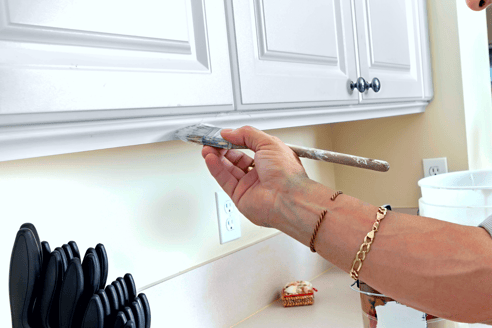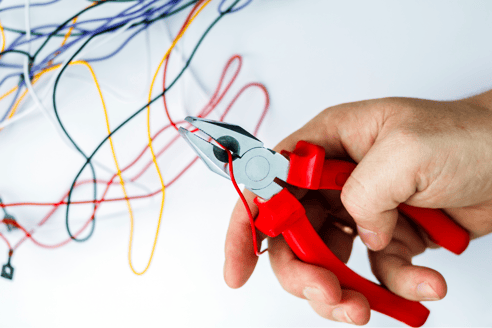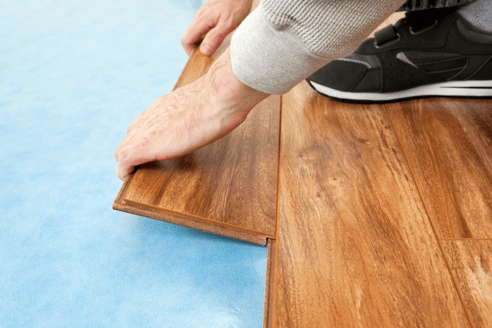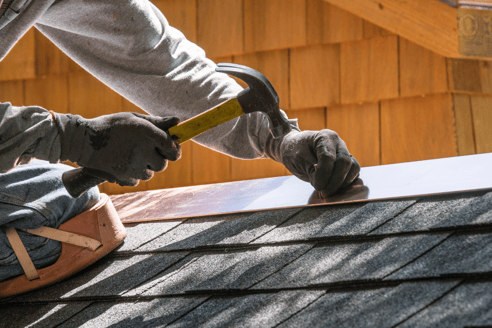
Most home repairs aren't rocket science.
With so many in-depth tutorials available at the click of a button, conquering home improvement with your own two hands feels more doable than ever.
A do-it-yourself or D.I.Y. project is when you do physical task with limited-to-no experience and without direct help from an expert. There are a medley of reasons why so many choose to handle projects with their own two hands.
The pros
DIYs are typically much cheaper.
Bringing in the expert will always be more expensive. After all, you're not just paying for the work; you're paying for time, tools and experience. Tackling a project yourself isn't always cheap, but considering how much it costs just to have a contractor pull into your driveway, you're still saving money.
You only need to trust yourself.
Since time is money, a subcontractor may cut corners to finish the project quicker. If this is a concern of yours, doing it yourself can help ease your mind about the quality of the work.
It's satisfying.
DIY projects can be both fun and rewarding, and you get to learn as you go.
The cons
Unfortunately, there is also plenty of downside to spearheading repair and improvement projects on your own.
The end result may not be showroom quality.
There will always be a degree of guessing when you're learning on the job. Most pros have seen it all, and will know their way around your kitchen or bathroom like they grew up there. There's a reason professionals are expensive. They don't want to come back and replace parts, so they use quality materials and do it right the first time.
It can be a time suck.
DIY can consume your free time if it becomes your go-to strategy. Without proper research and preparation, a one-day project can quickly become a month-long headache. When your hire a contractor, you can expect the job to be done fast and well.
The risk is real.
Sometimes it's tough to recognize when something only looks easy. There are boundless opportunities to harm your house, or yourself, with every little project. Some errors can end up costing more time, money and mess than it’s worth.
To help you weigh the pros and cons, here's a breakdown of various home improvement projects to help you make an informed decision about whether you're ready to commit to the do-it-all life, or pay an expert to do it for you.
Cosmetic upgrades
Aesthetic improvements like painting, wallpapering, wood staining and replacing hardware on existing furniture are a typical starting point for DIY'ers.
Painting
The most common of all DIY projects is painting. Painting your home is a rite of passage — but it requires patience. Your first paint job may turn out rough, so if you want to do this on your own, make sure to keep your cool and remember that you can always fix your mistakes. If you're really worried about it, trying practicing on something expendable beforehand.
Replacements
Replacing knobs and handles on furniture is surprisingly easy. But replacing cabinets and countertops requires a bit more skill. There's a reason kitchen remodeling is one of the most expensive things you can do to your house. While it might seem simple on YouTube, kitchen renovations are not recommended for novice DIY'ers.
Trim and molding
Much like paint, trim and molding along your floors, ceiling and doors can breathe new life into a drab room. Here's the kicker. Installing trim and molding is easy, but cutting it is not. Achieving the right angled cut on a piece of trim requires – at the very least – a miter saw (priced at $250-$600) and a ton of trial and error. There is no shame in hiring a pro for this scenario.
Doors
Replacing a door is easier in concept than execution. Many unforeseen problems can arise when installing doors due to improper framing, misaligned bottom plates, or even un-level floors and walls. If you value your sanity, it's usually worth hiring an expert to install doors for you.
Plumbing
Indoor plumbing is a modern convenience that you simply cannot live without. The good news is, most plumbing issues are easy to solve.
Clogged drain? Run a $3 hair snare down your drain and you're golden.
Clogged toilet? Run a $14 toilet auger down the tube and you're done.
The internet is a wonderful plumbing mentor. With the guidance of a YouTube video, mostly anyone can unclog a pipe, fix a minor faucet leak or changing a shower head. Just make sure you know where the shut-off valve is for your water supply, in case of emergency.
For major or complex projects, the cons far outweigh the benefits of doing it yourself. If you think you may have a clog in your main sewer line, you should call a plumbing professional.
If it's a simple repair, go ahead and take the plunge. But if at any point you feel out of your depth, pause what you're doing. Plumbing accidents can become a frightening and expensive scenario.
Electrical
DIY electrical work makes sense for many homeowners. Projects like replacing outlets, installing new light fixtures, installing a Ring Doorbell or changing your light switch plates are easy tasks that can be accomplished by any regular Joe.
What's important to know is this: Wiring is a high-stakes game.
When playing with electricity, it's better to be safe than sorry. If you're considering rewiring your home on your own, maybe give it some second thoughts. A licensed electrician can pull the proper permits and do the job in a way that doesn't put you and your family at risk.
Flooring
Installing your own floors is a labor intensive project that requires a lot of research and planning beforehand. Laying floors may seem as easy as laying puzzle pieces, but it's a bit more involved than that. There's a decent amount of prep work, and if you want to do it right, you have to make sure the floor is properly leveled and sealed.
That's not to say it's impossible. People DIY their floors every day. Just know that when you run into problems (and you probably will run into problems), it can bring your work to a stand still if you don't know what you're doing.
People also tend to underestimate how physically demanding tile and flooring work can be. It's brutal on your knees and back, and will definitely leave you feeling sore. When fatigue sets in, it'll be tempting to cut corners to get the job done. Fight the urge! Take a break, regroup and come back when you're ready to give it max effort.
Whether you're handling it yourself or hiring a team, redoing your floors costs a pretty penny. You may as well shell out a little extra cash to ensure it's done right.
Roofing
There's so much risk here. Yes, doing your own roof work can save you an absurd amount of money. But it's also backbreaking work that requires strength, dexterity and skill. Anything less and you could end up seriously damaging your house or yourself.
The worst part about rolling solo on a roof is that you cannot dawdle. You have to be efficient and finish the work quickly to avoid prolonged exposure of the elements to your unfinished roof. If you have the money, it's absolutely worth bringing in a team who knows what they're doing and can do the job quickly.
That tar should stop the leak. Its a shame you put the roof vent back in upside down letting the rainwater roll right in. #diy #fail. pic.twitter.com/L5TYXmSL6b
— Blue Owl Inspections (@blueowlinspects) October 28, 2016
6 questions to ask yourself before tackling a DIY project.
Have I done a project like this before?
If this isn’t your first time doing a project like this, you can probably handle it now. If it is your first time attempting this kind of project, you may still be able to do it, as long as you’re prepared for the extra work and focus it will involve.
Am I the best person for this job?
Seriously ask yourself, "am I biting off more than I can chew?" Every home has things that require attention and/or need fixing. That's why plumbers, electricians and roofers exist in the first place. Instead of learning a new skill from the ground up, reach out to a professional and see how much it would cost to bring in an expert. If you don't have the cash handy, a personal loan can help you finance the project quickly and easily.
Do I have someone to turn to if I have questions?
It’s best to be prepared in case you run into trouble mid-project. Get that contractor friend on speed dial.
Does this project involve structural framing?
Avoid tackling projects that involve cutting through walls, as you run the risk of cutting through engineered lumber and trusses that bear the weight of your home. If your project fits into this category, have a pro do the job or ask them for guidance before you begin.
Do I have what I need to complete this?
Before going all-in on your DIY project, estimate how much supplies and tools you'll need, and how much time you expect it to take. You may find that the DIY route is not as desirable as you think.
Could I get hurt?
Don’t risk your safety to avoid paying professional prices. You know what else costs a lot? Medical bills!
Like this article? Subscribe to our blog and have great financial insights delivered to your inbox weekly.









